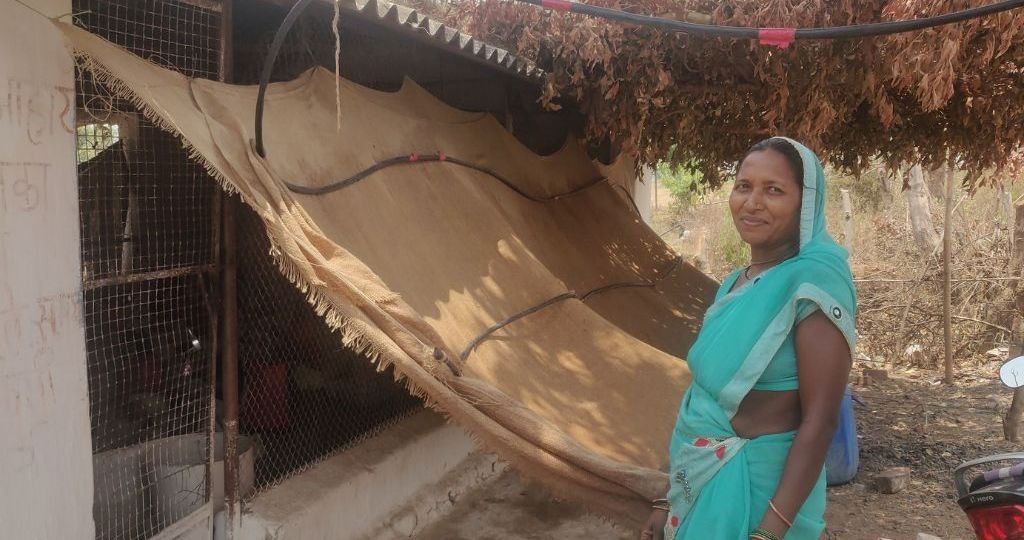

TIn Jharkhand’s Gumla district, the temperature in the last few summers has been 40-42 degrees Celsius. This is not good for broilers or chickens raised for meat production. The ideal temperature for broilers is 25 degrees Celsius. Large farms use foggers and coolers to keep the temperature low and maintain the health of their poultry. But small poultry farmers with 500-600 broilers cannot afford these technologies. These are not only expensive to buy but also expensive to run, as they consume a lot of electricity.
At Gumla Gramin Poultry SS Cooperative Society Ltd, run by all women, members are told about several measures that can help keep their sheds cool. These include placing straw (bhusa) or gunny bags on the shed’s asbestos roof and walls and sprinkling water two to three times a day. The problem is that the straw blows away if it is not tamped down. Water is also sprinkled on the birds and the shed floor to keep the interiors cool. But these measures manage to reduce the temperature by only 2-3 degrees.
As the heat increases, more broilers die if their sheds are not kept cool. About 5-7 per cent of the chickens in a farm die every summer. Earlier, the mortality rate was 1-2 per cent. There are other problems too: because there is too much heat to feed, broilers lose weight. In winter, the average weight loss is 2 kg, down to 1.8 kg. Less weight means less income. While individual poultry farmers earlier earned Rs 50,000 annually (as producer fees), we now earn Rs 40,000. Overheated sheds prevent us from rearing more broilers in a batch. An air-conditioned shed can house 800-1,000 broilers (one bird per square foot), but an uncooled shed can house only 600 (one bird per 1.25 square feet) if overcrowding and heat stress are to be avoided.
It also takes longer to raise a batch of chickens to the desired weight as weight gain is slow. This again leads to a drop in income. Earlier we had six to seven cycles of breeding, and now we breed on an average five times a year. Each cycle takes about 40 days. After each cycle, the shed has to be cleaned, whitewashed and allowed to rest for 15-20 days. The longer it takes to raise a batch, the more food and water the birds have to be given, which again costs extra time, money and effort. Drinking water bowls have to be filled four to five times a day instead of the usual three times. This creates extra work for the women, some of whom walk long distances to fetch water. And then glucose has to be added to the water to rehydrate the birds.
Some of us have worked with the SELCO Foundation to make the sheds cooler. We have installed solar exhaust fans and lights and coated our roofs with chuna (limestone). But, since the exhaust fans run all day, the light bulbs (on solar) cannot run at night. However, these measures have generally helped. This time only 20 of the 600 chickens on my (Sarita’s) farm have died. And they have not lost much weight either. Another recent initiative involves replacing asbestos roofs with ‘cool roofs’, which not only help reduce summer stress but also trap heat during winter.
Sarita Devi advises the board at the all-women Gumla Gramin Poultry SS Cooperative Society Ltd. Akhilesh Kumar Verma is the Manager at Jharkhand Mahila Swavalambhi Poultry Cooperative Federation Limited.
Source – idronline

